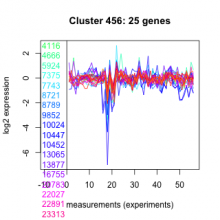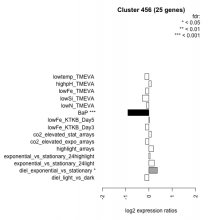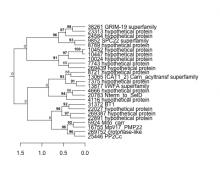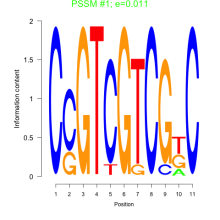9852 SPC22 superfamilyThalassiosira pseudonana
| Chromosome | Product | Transcript Start | End | Strand | Short Name | |
|---|---|---|---|---|---|---|
| 9852 | chr_14 | SPC22 superfamily | 537827 | 538735 | - | SPC22 superfamily |
| NCBI ID | Ensembl Genomes exon ID |
|---|---|
| 7451247 | Thaps9852.1, Thaps9852.2 |
| Expression Profile | Conditional Changes | Cluster Dendrogram | Discovered Potential cis-Regulatory Motifs |
|---|---|---|---|
Thaps_hclust_0456 |
 |
 |
   |
| Normalized Mean Residue | Discovered Potential cis-Regulatory Motifs | |
|---|---|---|
|
Thaps_bicluster_0182 |
0.48 |
 0.011  8 |
| T. pseudonana | P. tricornutum | P. tricornutum DiatomCyc | F. cylindrus | Pseudo-nitzschia multiseries | E. huxleyi | C. reinhardtii | A. thaliana | P. sojae |
|---|---|---|---|---|---|---|---|---|
| Not available | PHATR_18533 | PHATR_18533 | 195672 | 260607 | 218228 | Cre14.g620400.t1.2 | AT3G05230.1 | 444736 |

Add comment